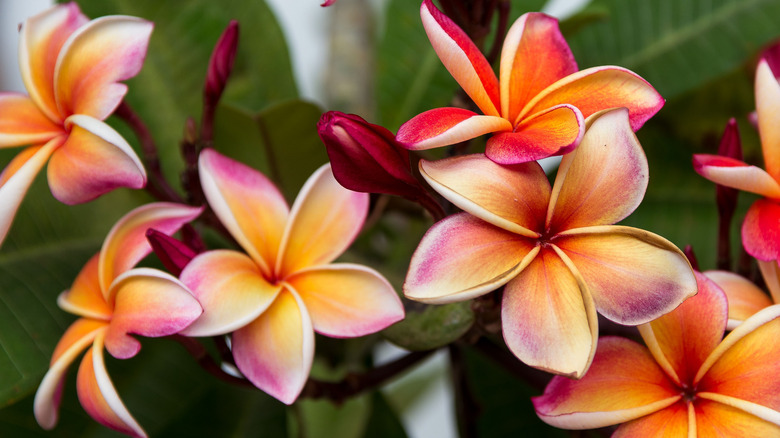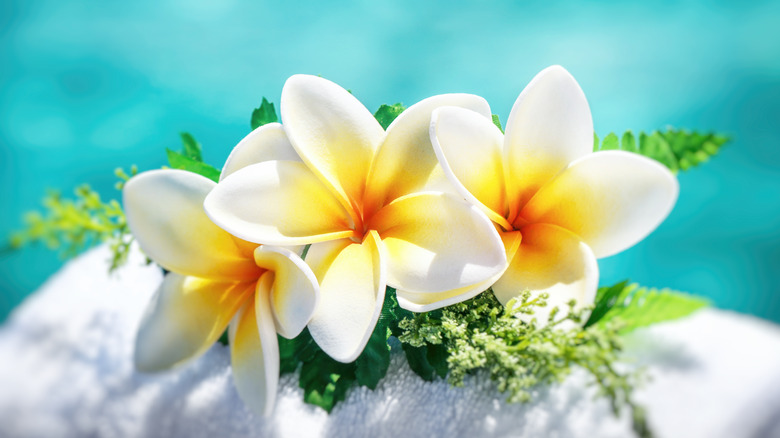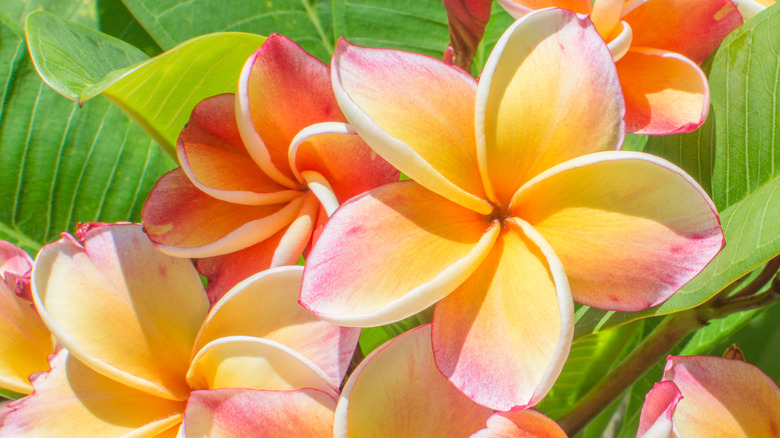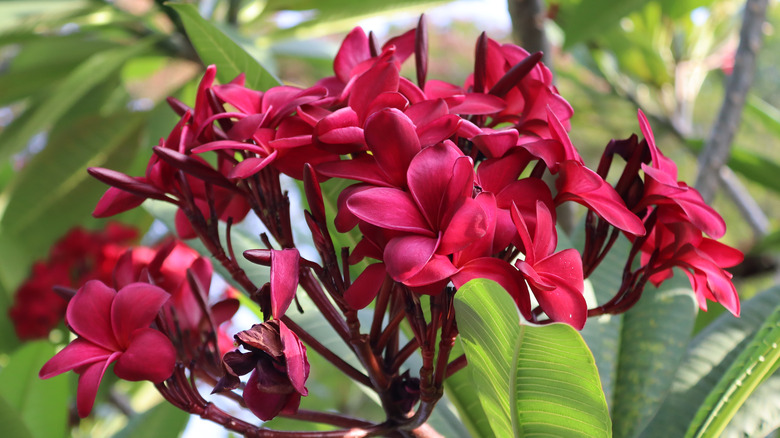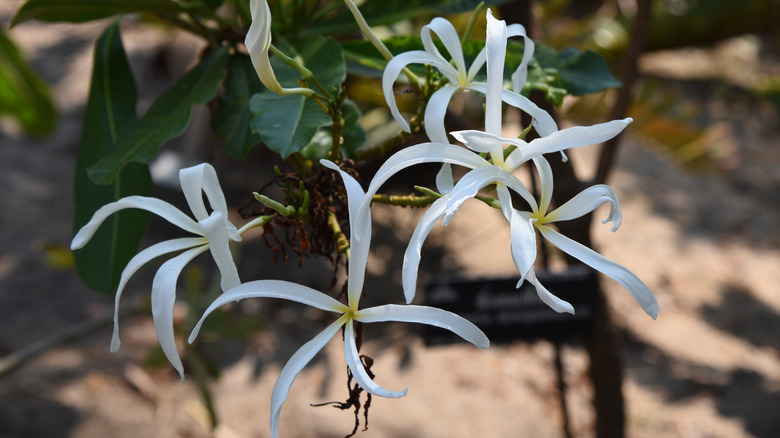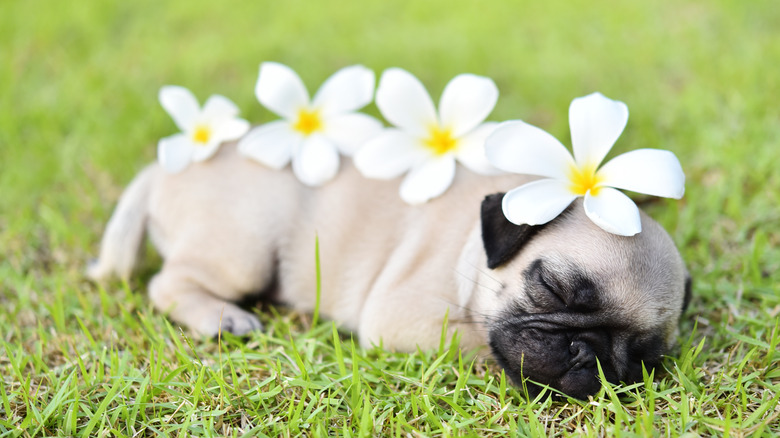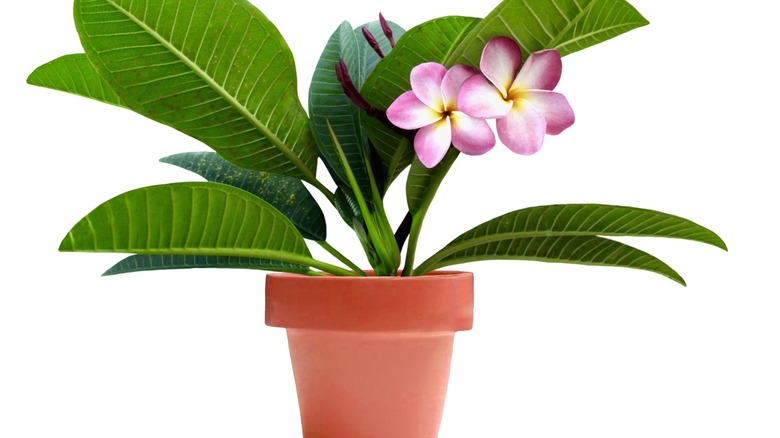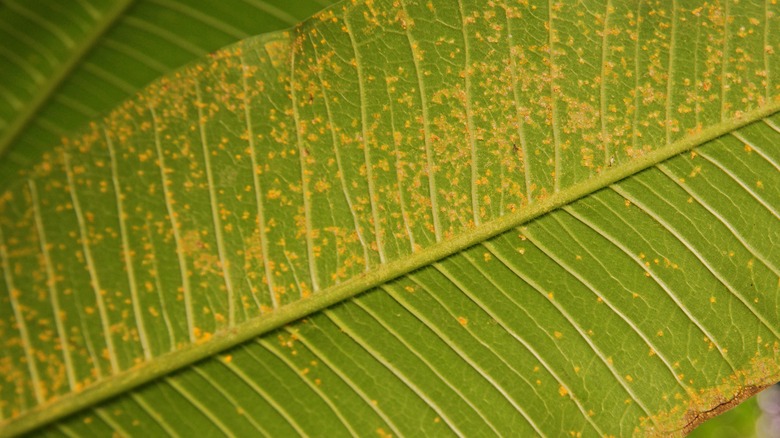How To Successfully Care For And Grow A Plumeria Plant
Plumeria is the genus classification name for a sweet-scented flowering plant found naturally in sub-tropical and tropical climate zones. This scientific name comes from Charles Plumier, the Franciscan monk and botanist who first identified it in the 17th century. It received its common name of frangipani from an Italian marquess, with the surname Frangipani, who used it to create perfume. Both names, plumeria and frangipani, are used interchangeably today.
Plumaria is the national flower of both Nicaragua and Laos, where it symbolizes immortality and is revered as sacred within Buddhist culture. Its sheer beauty and delightful scent gain it a prominent place within Hawaiian culture as well. There, it is often used in the creation of traditional floral garlands, also known as leis. According to With Our Aloha, the plumeria flower holds significant uplifting symbolism, particularly in the areas of beginnings and love.
The plant itself is a tree with bent branches, gray bark, luscious green leaves, and small pinwheel shaped blossoms that grow in clusters. Frangipanis will continue to bloom for many months of the year, and, depending on the variety, these flowers primarily come in whites, yellows, oranges, and reds. Easy to care for and heavenly scented, All About Frangipanis calls plumerias "great survivors" because they will come back to life after being ignored for a time or suffering from drought.
How to use plumeria in garden
Left on their own, these tropical trees can grow up to 25 feet high and 25 feet wide. However, with regular pruning to control size, they can make colorful and fragrant additions to a more contained and landscaped garden design. South Florida Plant Guide suggests planting trees in an area with full sun and keeping them at a manageable 6 to 8 feet high. Additionally, plumeria should be planted at least 4 feet away from buildings or other structures so it clears roof eaves and gutters as it stretches to its preferred height. The extra space will also ensure that it grows evenly on all sides.
Although they produce copious arrays of flowers throughout spring, summer, and fall, plumeria trees are deciduous and will lose those flowers and their leaves in the winter. This can make them appear to be dead for part of the year, even in warm climates. Therefore, they are not the best option for a stand alone centerpiece, but work better when bunched together with other foliage. Garden Clinic has many ideas for gorgeous companion plants, depending on where you live, from epiphytic (air plant) orchids to canna lilies to rock rose shrubs and lavender.
In the heat of summer, plumeria blossoms give off a delightfully sweet-scented fragrance. Consider placing a garden bench close to your tree to enjoy this indulgence, especially in the evening when they emit their strongest scent in the hopes of attracting sphinx moth pollinators.
How to grow plumeria
Growing a plumeria from seed will take time and careful attention. Per The Spruce, the first step to take is testing the viability of your seeds by soaking them in water. Simply put, seeds that float could be dead. So, go with the seeds that sink to the bottom. When you have your seeds sorted, you'll need to arrange them correctly in seedling trays by burying the thicker end into the soil and leaving the thinner end, or wing, slightly protruding. Keep the soil moist. It may take several weeks to see progress. Seedlings can be transitioned to a grow pot and gradually moved into direct sunlight after they've grown to be a few inches tall.
Propagation through cuttings is an easier, though equally time-consuming, way to grow a new plumeria plant. You'll need sharpened gardening shears, rooting powder, and a well-draining soil mix. In springtime, look for an established branch with gray bark and cut off a 16- to 18-inch piece. Next remove all of the leaves except those at the very top of the cutting. This cutting will need to harden for at least one week. Once the cut end has become calloused, dip it first in water, then in rooting powder. Now it's ready to be transferred to a pot with your soil mix. Water your cutting generously but be careful not to overwater in the coming weeks so that you avoid root rot.
How to care for plumeria
Before planting a plumeria, it is important to consider your temperature zone and environment. While they are drought resistant and can tolerate different types of soil, these trees cannot survive a cold winter. Gardening Know How explains that if you live in an area where the temperatures drop significantly in winter, you can either remove your tree from the ground in late fall or simply keep it as a potted plant year-round. Either way, you will need to bring your plant indoors for what is referred to as "overwintering."
Also keep in mind that these plants require six hours of sun per day. Watch your yard over the course of a day to determine the best spot or, if growing indoors, make a space for your potted plumeria near a south facing window for maximum sun exposure. Water weekly, allowing soil to dry between waterings.
Stay conscious of how much nitrogen your plumeria is receiving because too much will result in fewer flowers and many more leaves. Per The Spruce, to produce a truly flourishing tree, high-phosphorous fertilizer applied monthly is essential. When the plants go into their winter dormancy, stop fertilizing and cut back significantly on watering.
Plumeria varieties
According to the Plumeria Society of America, there are over 350 varieties of plumeria. That said, All Things Frangipani brings that number down to four when considering the popular varieties you are most likely to come across. Topping the list is Plumeria Rubra. For the strongest scent and the most color options, this is your go to. Flowers can be white, yellow, orange, pink, red, or multi-colored. Each bloom will have five tightly wound petals opening out into the shape of a pinwheel. Rubra have long and pointy deep green leaves and are the largest growers of this genus.
Here are three other common varieties:
- Plumeria Obtusa
Try this variety if you like pink and white flowers, as those are the only options. Plumeria Obtusa is evergreen, meaning it can keep its leaves year-round. This plant has less pointy leaves than Rubra. Flower petals open farther and fold back a bit on the ends. - Plumeria Stenophylla (pictured above)
Stenophylla leaves and flowers are long and slender. The space between petals is bigger, giving blooms a stringy look. Stenophylla flowers are always white or cream. - Plumeria Pudica
This variety can also be evergreen when planted in a warm climate zone. Its leaves are noticeably different with wide heart-shaped tips. There is a rare pink cultivar, but Pudica flowers are usually white or cream.
One thing all frangipani plants have in common is their delicate beauty. Whichever variety you choose, this is a plant you are sure to love!
Is plumeria toxic?
The USDA Forest Service classifies the plumeria as a toxic plant because its flowers, leaves, and branches all contain slightly toxic compounds called alkaloids, which can irritate sensitive skin or cause abdominal cramps. If you are in the highly sensitive bracket, care should be taken not to touch the plant. And, of course, no one should ingest any part of it for any reason. Simply washing your skin with soap and water should relieve any discomfort brought on by accidental contact.
Animal Poisons Hotline also confirms that while it can cause some irritation, the plumeria plant exhibits a low risk overall and is unlikely to truly poison your pet. The sap in the stem bark is the most toxic part. Ingesting large quantities can lead to vomiting and diarrhea, as well as other gastrointestinal distress. In these cases try to get your pet to drink water. Wiping their mouths with a wet towel can also help. If symptoms continue, contact your veterinarian.
How to repot plumeria
Gardening Know How notes that the best time to repot a plumeria plant is fall and winter during its natural season of dormancy. Potted plants like a snug home, so choose a pot that is only one size up from the original. Also, make sure you have clean gardening shears or scissors nearby to trim excessive and/or dead roots. Plumeria trees can tolerate many different soil conditions, but they will start to die if left in standing water. Therefore, whichever soil mix you choose, the most important quality is that it be well-draining. Plumeria 101 recommends perlite and sand as potential additives if increased drainage is necessary.
A potted plumeria should be repotted once a year. Roots sneaking out of drainage holes or encircling the root ball are sure signs that it's time. It's a good idea to loosen and trim the roots for two reasons. First, trimming encourages new growth, which keeps your plant healthy. Second, loosening the root ball allows the roots to spread out and cling better to their new soil home.
Loosening, or teasing out, the roots is so important The Spruce has dedicated an entire article to it. Their top tips include pulling your fingers through tightly wound roots, the same way you would through your hair, and having a gentle touch. But don't stress if you break a few roots. The point of this process is to send a message to the plant to grow new ones.
Plumeria diseases
Plumeria rust is a fungal disease specific to the frangipani. Scientifically known as Coleosporium plumeriae, this fungus looks like yellow and orange dust on the leaves. A 2009 study done by the University of Hawaii claims that no one knows how the offending pathogen has made its way around the world, and that it can be difficult to spot because, at first, the rust can only be found on the underside of affected leaves. Plumeria rust will not kill the plant, but if it is left untreated, it can cause all of the plant's leaves to die and fall off, leaving you with nothing but gnarled stems.
To prevent this from happening to your frangipani, take these precautionary steps. Keep the area around your tree clean and free of fallen leaves and weeds. Even though the fallen leaves are dead, they need to be destroyed in order to kill the pathogen. It's possible to reduce the potential for infection if you plant your tree in a dry area. Remember, these plants love the sun and can survive some drought. Finally, check the undersides of your plant's leaves regularly and spray them with fungicide as soon as you notice any yellow or orange tinged discoloration. Take care when using chemicals and follow manufacturer's instructions. This pesky pathogen can develop a resistance to certain fungicides. So, if you have a persistent case of plumeria rust that keeps coming back, try different fungicidal options and keep switching it up.
